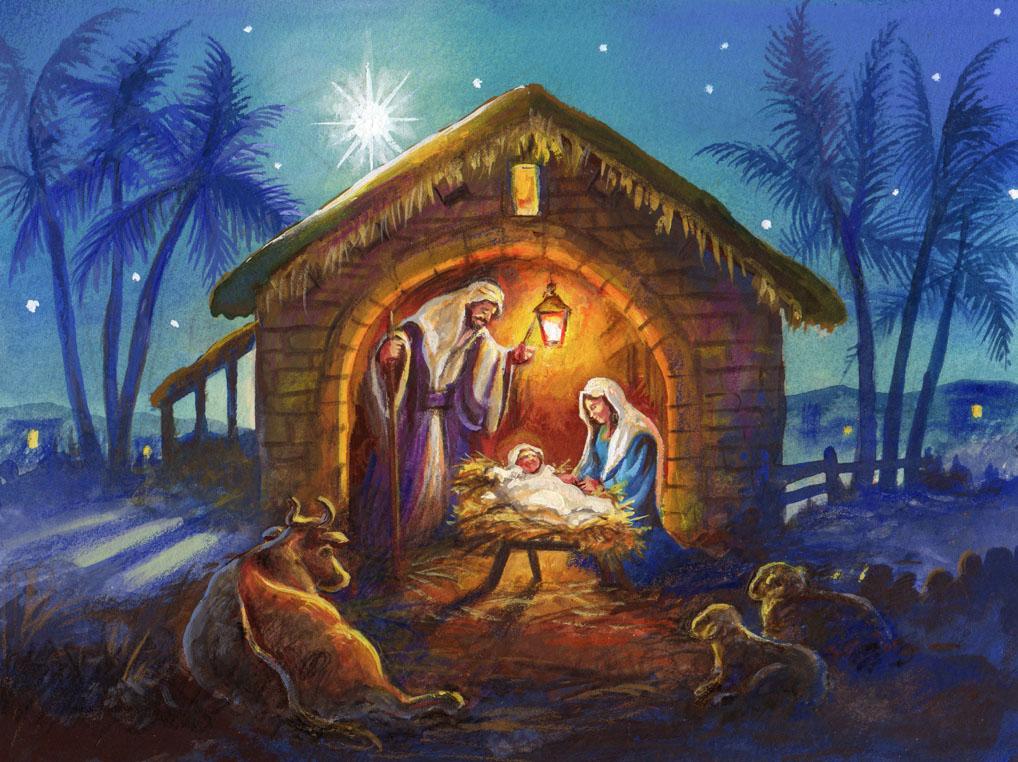Christmas - The Birth of Jesus
Christmas Day
Today the Church celebrates the Birth of Jesus Christ, the first day in the octave of Christmas. Throughout Advent the Church longed ardently for the coming of our Savior. Today she celebrates His birth with unrestrained joy. “The Word was made flesh and dwelt among us.” The Son of God became man to give us a share in that divine life which is eternally His in the Blessed Trinity. Christmas time begins on December 24 with the first Vespers of the feast and ends on the feast of the Baptism of Christ. White vestments reappear in our churches as a sign of joy.

The Christmas feast is a festival full of joy. The Eternal Word has become Man and dwells among us. The longings of the patriarchs and prophets are fulfilled. With the shepherds we hurry to the manger and adore the Incarnate Son of God, who for us and for our salvation descended upon earth. The purpose of the Christmas feast is beautifully expressed in the Preface of the Nativity: “For by the mystery of the Word made flesh the light of Thy glory hath shone anew upon the eyes of our mind; so that while we acknowledge Him a God seen by men, we may be drawn by Him to the love of things unseen.”
During the Christmas season there is an extensive exchange of greetings and good wishes among friends. These greetings are a reminder of those “good tidings of great joy that shall be to all the people, for this day is born to you a Savior Who is Christ the Lord” (Lk. 2:11). They are a reminder, too, that all blessings and graces come to us from Christ: “Hath He not also with Him given us all things?” (Rom. 8:32).

During the Christmas season there is also an exchange of gifts. This custom should recall to us that on this day God Himself gave to us the greatest of all gifts, His beloved Son: “God so loved the world as to give His only begotten Son” (John 3: 16).
The Christmas tree, of which the first-known mention was made in 1605 at Strasbourg, was introduced into France and England in 1840. It symbolizes the great family tree of Christ which through David and Jesse has its roots in Abraham, the father of the chosen race. It is often laden with gifts to remind us that Christmas brought us the priceless gifts of grace and of eternal life. It is frequently adorned with lights that recall to us that Christ is the Light of the world enlightening those who sit in darkness and in the shadow of death.
Though not entirely unknown before, the custom of the Christmas Crib was adopted by St. Francis of Assisi at Greccio, Italy, on Christmas 1225. It is a concrete and vivid way of representing to ourselves the Incarnation and birth of Christ. It depicts in a striking manner the virtues of the newborn Savior, especially His humility, poverty, and charity.